Another Spanish saying and proverb 82
Tuesday, October 30, 2018
This saying, “La Codicia (o Avaricia) rompe el saco” ("Greed --or Avarice-- breaks the sack" is very popular in Spain, and appears in the work of the Marquis of Santillana and also in the novel “Retrato de la lozana andaluza” ("Portrait of the Andalusian lush"), by Francisco Delicado.
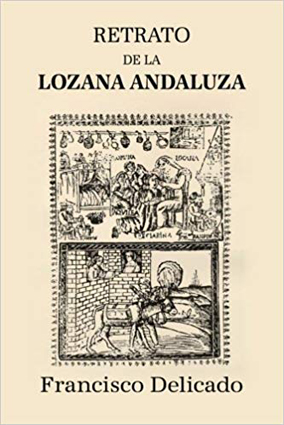
The novel
And this saying teaches that there have not been few times, when a person has lost the opportunity to obtain a reasonable profit for the longing to get another greater.

Money

A broken sack
Well, I hope that you will like this saying.
Until my next post, kind regards,
Luis.
Sponsored by Costaluz Lawyers.
Please click below:

 0
Like
Published at 10:59 AM Comments (0)
0
Like
Published at 10:59 AM Comments (0)
International Flower Fair in southern Spain
Friday, October 26, 2018
From the 19th to the 28th of this month, the International Fair of Flowers (FLORA) 2018, in Córdoba (Southern Spain), is being celebrated.
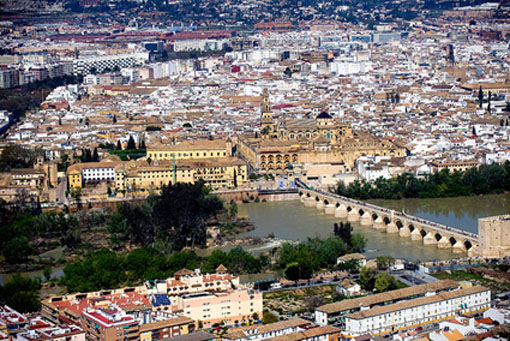
Córdoba
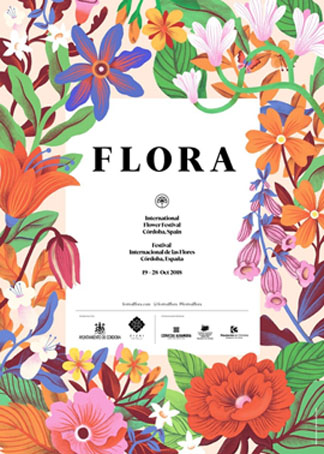
Poster of FLORA 2018
This year, the motto of the Fair is: "The game".
There have been several artists, exposing their creations with flowers in different patios –specifically 6-- of the city.
The patios of Cordoba awaited their second spring and the last Friday, punctual to their appointment, opened their doors to those who already wanted to know the creations of the second edition of the International Fair of Flowers, FLORA. Since 11:00 hours, Cordovans and tourists have visited the six installations of contemporary floral artists who, installed in many other institutional courtyards of the city, have left no one indifferent. Flora rediscovers again the beauty of Cordoba's courtyards.
We started our tour in the Clock Court of the Provincial Council, where the Russian artist, Natalia Zhizhko, has installed the composition “Here comes the sun”. Inspired by the sundial, that gives its name to the patio, the creation resembles seven rays of the sun, playing with flowers of different shades from pale yellow to the brightest, as are the tones of the sun according to the time of day. From orchids to carnations, the flowers come alive within those sunbeams and also play around the courtyard fountain.
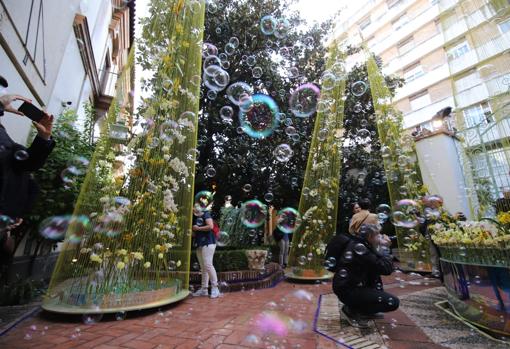
The Palace of the Council
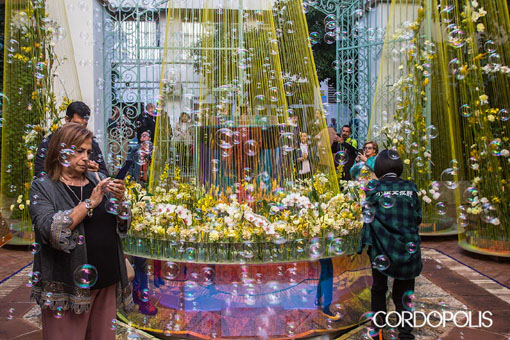
Work by Natalia Zhizhko at the Palace of the Council
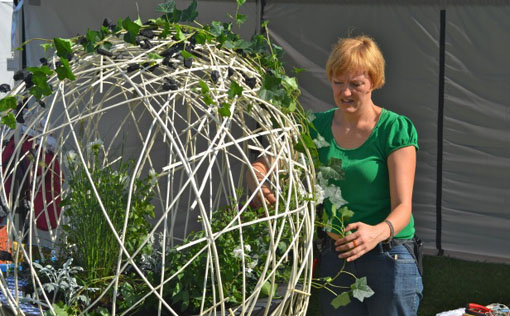
Natalia Zhizhko working
In another of the spaces that compete in Flora, the Patio de las Columnas of the Palacio de Viana, the creation of the Chinese Honghui You, known as Sherlovell, takes shape with its installation “Flowing“ (Fluido). Because the flow of water, in the rectangular fountain on which the creation is installed, is the guiding thread of this work, where the red colour takes center stage, compared to the transparency of the water and the circular structures used to support the flowers. Red flowers --many zinnias--, that drink from small crystal spheres and that expand along the fountain, playing with the flow of water, with the waves of their movement and the waves of the relaxing sound of the falling water.
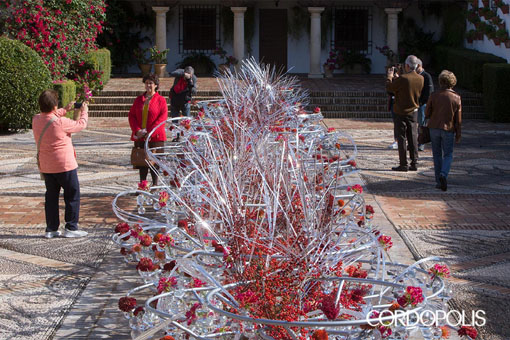
Sherlovell Yu´s work at the Palacio de Viana

Sherlovell Yu´s work close up

Honghui-Yu (“Sherlovell”)
A snapshot of nature is what can be found in the Palacio de Orive, where the Cordovan Lola Guerrera has created “Perseidas”. Mosses and stones make up a base for plants, with a predominantly intense green colour, and where live flowers and dried flowers, collected by the artist, are protagonists. As the Perseids fall in the sky, on this creation falls a shower of small flowers and dry leaves, as if one of those stars was treated and could be traced from the same sky. And, a curiosity, from the heights --in the upper floor of the Orive Palace, that overlooks the courtyard-- small telescopes show the visitor how the nature, that is mixed, is also composed of small insects.
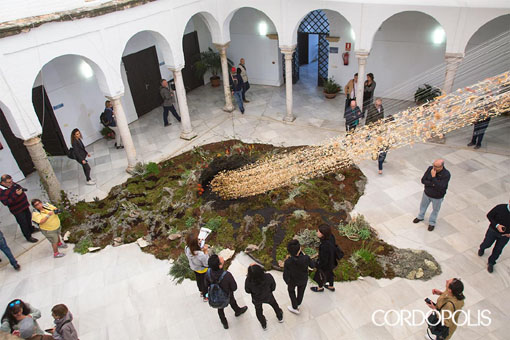
Work by Lola Guerrera in the Palace of Orive
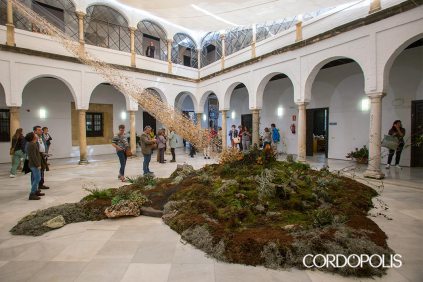
Work by Lola Guerrera from below
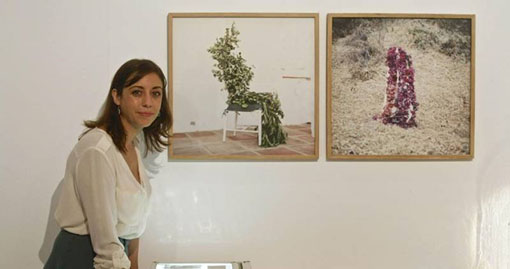
Lola Guerrera with two works of her
Advancing in the route, it is the turn of the patio of the Posada del Potro. Here, the Japanese, Hideyuki Niwa, has installed “The Impulse of Passion”, a creation made of 10,000 branches of red dogwood, that cover a spiral structure, on which stand out yellow flowers --glorious--, that drink from small test tubes arranged in the installation. Simplicity has guided the author, in this creation that centers all the protagonism of this centennial courtyard.
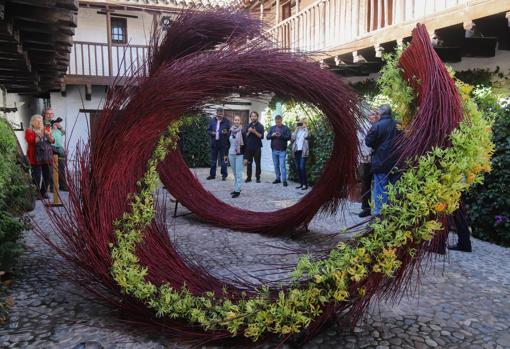
The work by Hideyuki Niwa The Second prize
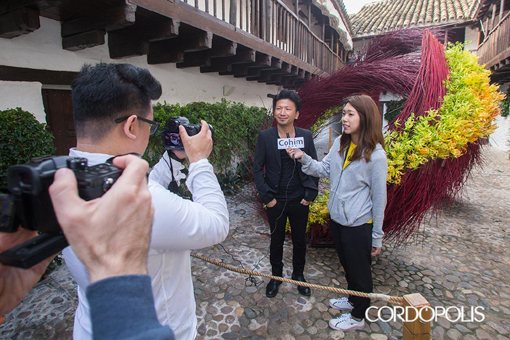
Hideyuki Niwa
Many more elements are those used by the British Carly Rogers, in her installation in the courtyard of the Archaeological Museum. “Capricho” is the name of a creation, that recreates an English garden and where, from a huge sphere of green moss, all kinds of plants and branches of trees, that show the wild nature of this wild garden, are born. From weeping willow branches, to shrubs with fruits and flowers, overflow this creation, that stands out among the white marble of the patio and the archaeological pieces of the building.
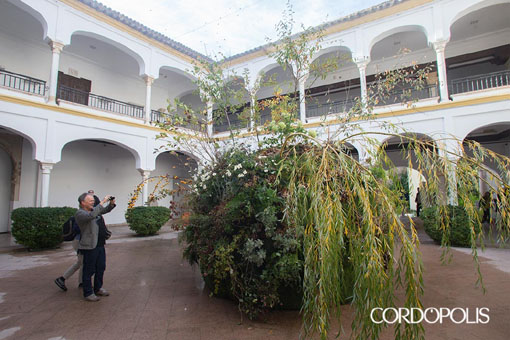
The work by Carly Rogers in the Archaeological Museum
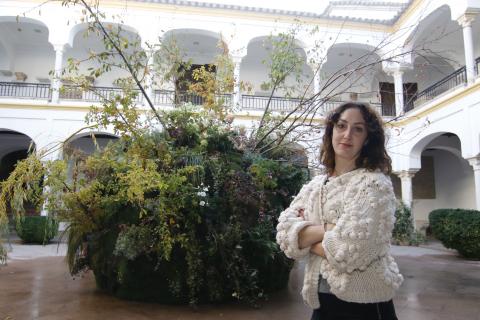
Carly Rogers
The colours are precisely the protagonists of the last patio in competition. The Art School Mateo Inurria welcomes the creation of the Belgian, Mark Colle, in his garden, which with “Los niños del parque” (“The children of the park”) wanted to represent just that, a playground. But an empty playground, abandoned, where he has given life with roses, hydrangeas, carnations or brightly colored chrysanthemums to the swings and games of a playground, in which, however, wild plants are entangled above them, because no child has been playing there for a long time. Their voices and their games, however, are present in the ambient sound that this author has put as part of his message, vindicating the traditional games between children, in front of the solitude of these in front of a computer screen or ipad.
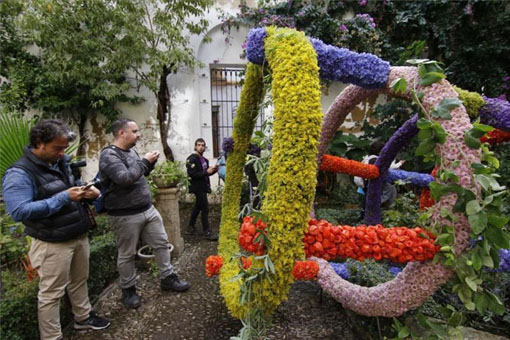
The work by Mark Colle in the School Mateo Inurria
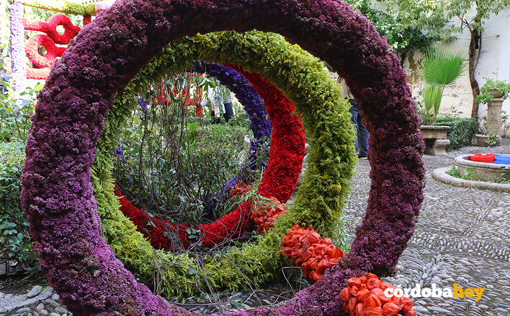
Another angle of the work by Mark Colle
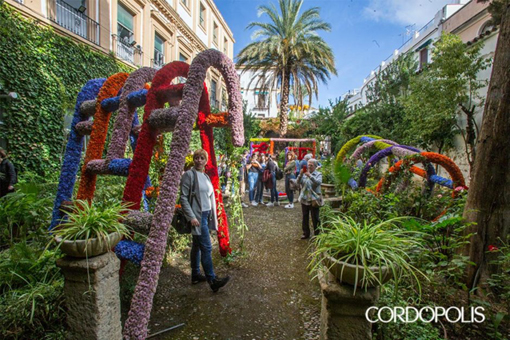
Another work by Mark Colle in Mateo Inurria
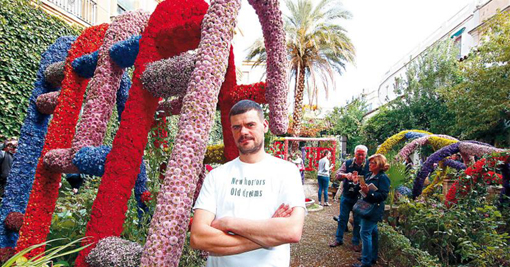
Mark Colle The First Prize
Messages and creations, flowers and plants, come back to surprise in this second edition who visits the patios of FLORA. Today, Friday, the Exhibition of these floral art works, which could be visited from 11 to 20 hours, is closed.
I do not know if you can go to this Fair –perhaps the next year--, but I hope that you can go to Cordoba, as soon as possible, because Cordoba is a wonder, it is ”Pure Art”.
Until my next post, kind regards,
Luis.
Sponsored by Costaluz Lawyers.
Please click below:

 0
Like
Published at 12:42 PM Comments (0)
0
Like
Published at 12:42 PM Comments (0)
Spain will be the country with the highest life expectancy in the world in 2040
Tuesday, October 23, 2018
Spaniards will have a life expectancy of 85.8 years by 2040, which will make Spain the country with the highest life expectancy in the world, according to a study by the University of Washington (Seattle, USA).
Currently, Spanish citizens live an average of 82.9 years, an amount that puts Spain in fourth place, in the world ranking on life expectancy, which is made up of 195 nations.
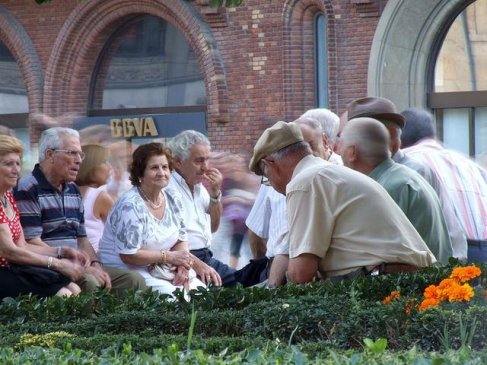
Older Spaniards nowadays
Japan, Switzerland and Singapore are the first three countries, that now surpass Spain in that table, which considers the situation of health, at the national level and mortality rates, among others.
However, the projections of the Institute for the Metrics and Evaluation of Health of the University of Washington, for 2040, indicate that Spain will surpass these three nations, in the classification, and will lead the table "if recent health trends continue".
In addition, in the best possible scenario raised in the report, life expectancy in Spain could rise up to 4.5 years, that is, up to 87.4 years of age.
In 2016, the top ten causes of premature death in Spain were, in order, ischemic heart disease, Alzheimer's, lung cancer, stroke, chronic obstructive pulmonary disease (COPD), cancer of the colon and rectum, breast cancer, suicide, other cardiovascular diseases and lower respiratory infections.
In 2040, however, it is expected that the fundamental reasons for premature death in Spain are Alzheimer's, ischemic heart disease, lung cancer, COPD, colon and rectal cancer, stroke, chronic kidney disease, other cardiovascular diseases, pancreatic cancer and diabetes.
The United States, meanwhile, which is ranked number 43 worldwide, with a life expectancy of 78.7 years, will go down to position 64 in this ranking, according to the calculations of the experts.
On the other hand, the team led by the teacher Kyle Foreman projected a significant global increase in deaths from noncommunicable diseases (NCDs), including diabetes, chronic kidney disease and lung cancer, as well as the worsening of health outcomes linked to obesity.
In their conclusions, the authors stressed that there is "a great potential" to influence health through the fight against high blood pressure, obesity, smoking, alcohol and air pollution, among others.
They also recommended to the national governments to address "key risk factors", such as education levels and per capita income, to improve the life expectancy of their countries.
But, in addition to these factors, I believe that the "Mediterranean Diet" also influences the life expectancy of Spaniards.
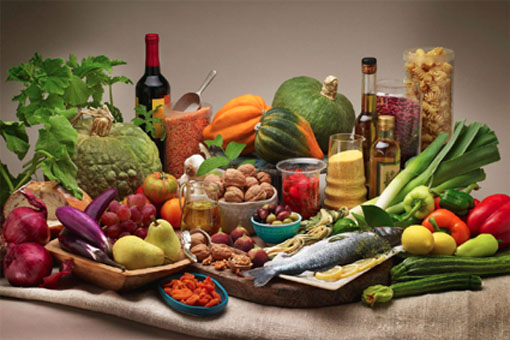
The Mediterranean Diet
Well, I hope that you will like this article and hope that you enjoy Spain, if you are living here or you are visiting my country.
Until my next post, kind regards,
Luis.
Sponsored by Costaluz Lawyers.
Please click below:

 0
Like
Published at 11:27 AM Comments (0)
0
Like
Published at 11:27 AM Comments (0)
Alquife: an almost abandoned village in the southeast of Spain
Thursday, October 18, 2018
Today I would like to talk to you about an almost abandoned village, which formerly had important mines: "The mines of Alquife".
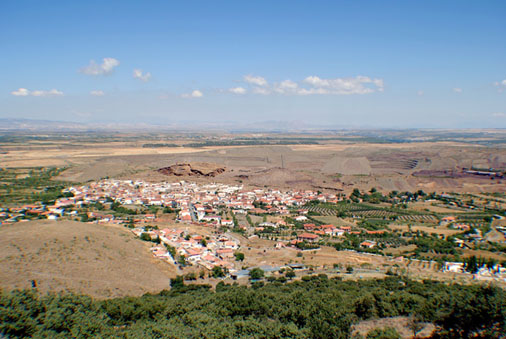
Alquife from afar
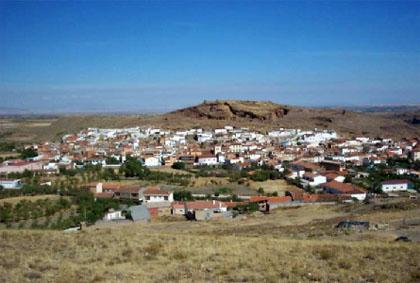
Alquife close up
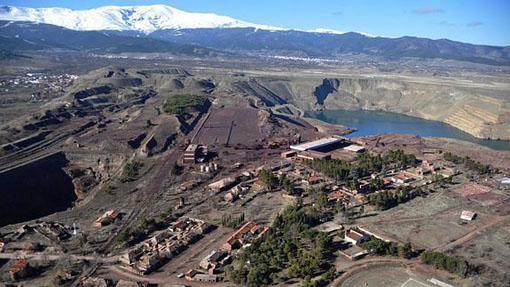
The mines of Alquife

Another view of the mines and Sierra Nevada in the background

Inside the mines of Alquife

The quarry of Los Pozos
This village belongs to the province of Granada and is located in the southern part of the region of Guadix. It is limited with the municipalities of La Calahorra, Aldeire, Lanteira, Valle del Zalabí and Jérez del Marquesado. Other nearby locations are Albuñán, Cogollos de Guadix and Ferreira. In 2016 it had 703 inhabitants. It is 82 kilometers from Granada capital.
The visit to the old Alquife mines --an open-pit iron deposit considered the largest in Europe of its kind-- is the municipality's main tourist attraction.
The village is known for its two mines --the last one was in operation until 1996-- and its history has been linked to the extraction of minerals, in its surroundings, since the times of the Roman Empire. The monument to the miner --located at the entrance of the municipality-- gives a good proof of it.

The monument to the miner
In the mines there is an inner lake formed by the flow of groundwater, which is currently a reservoir with a depth of about one hundred and thirty metres of water. The huge crater is already a natural part of the landscape. Another of the most striking features are the large slag heaps of the iron mines and the huge deposit that reached the water pipes in charge of supplying the mining district.

The Alquife reservoir from afar

The reservoir close up
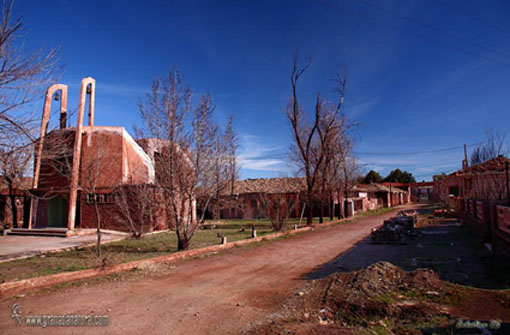
A street of Alquife
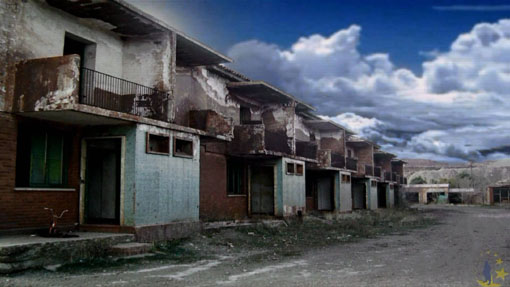
Another street of Alquife
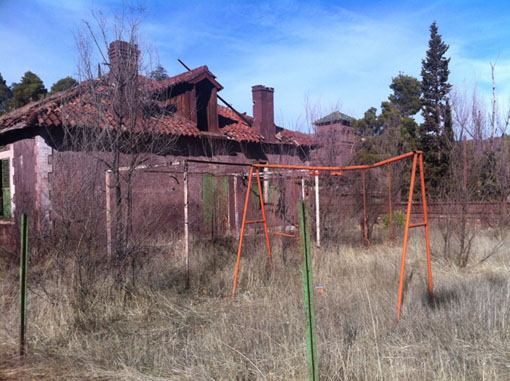
A house with a swing
The municipality celebrates its popular and patronal celebrations between the last days of the month of April and the first days of May, in honor of San Hermenegildo, with its popular “Palo Alquifeño” (“stick of Alquife”), the patron saint of the village. In the next picture, you can see, in the background, the image of San Hermenegildo and, in the first place, "El palo Alquifeño" --that when the procession is finished, the stick will be burned down--.The "stick" is a hollow trunk with the size of the old poles of light, and filled inside with all the rockets that fit, usually between 300 and 400. When the wick is lit, it is all a matter of seconds, but the deafening roar and the spectacle of the rockets, leaving each one by where they can, they remain already in the memory of the people of Alquife, until the following year.

San Hermenegildo Patron Saint of Alquife
In the afternoon, the floral offering is made, at nightfall the processional Rosary is performed, in which San Hermenegildo is accompanied by Our Lady of the Rosary, which for two consecutive years has accompanied him, since fifty years ago the tradition was lost.
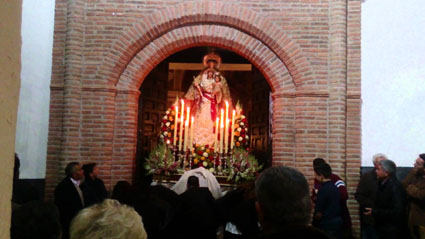
Nuestra Señora del Rosario
The procession of the Rosary begins around half past ten at night, where gunpowder is the sign of the fervor and delirium of a people by their patron saint and the virgin. The procession usually lasts until the wee hours of the morning. The big day of the festivities begins with the celebration of the Mass in honor of Saint Hermenegildo, presided by numerous parish priests of the nearby parishes. Around seven o'clock, in the afternoon, San Hermenegildo goes out in procession on a carnation mountain, carried by the men and women of the village, along the procession are offered hundreds of rockets that culminate with the burning of the traditional “Palo Alquifeño” to that from midnight. The legion honors the great patron saint of the village of Alquife, marching in front of him, in the procession parade. The festivity of Santa Bárbara, on December 4, is also commemorated, in line with the mining tradition of the area.
Well, I hope that you will like this article.
Until my next post, kind regards,
Luis.
Sponsored by Costaluz Lawyers.
Please click below:

 1
Like
Published at 12:15 PM Comments (0)
1
Like
Published at 12:15 PM Comments (0)
Spanish researchers confirm for the first time that a tumor suppressor protein protects against obesity
Thursday, October 4, 2018
Today I would like to tell you about a very important news related to Medicine: "Some Spanish scientists find a protein that helps against cancer and obesity".
Researchers from the group of Molecular Metabolism have discovered that the “p53 protein”, known for its function as a tumor suppressor, can act as a new therapeutic target, to fight against obesity.
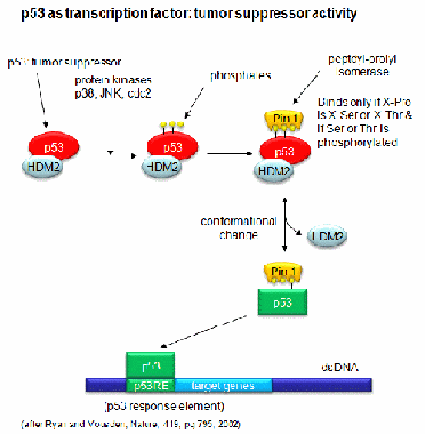
P53 protein

The P53 against obesity
Specifically, this group of researchers, attached to the Center for Biomedical Research Network, in its thematic area of Physiopathology of Obesity and Nutrition (CIBEROBN) and the University of Santiago de Compostela (USC), and the Health Research Institute of Santiago de Compostela (IDIS), has shown, for the first time, that the activation of p53 protein, in a specific region of the brain, is capable of reversing obesity, in obese mice, as it decreases intake and especially stimulates brown fat (The "brown fat" is a special type of body fat, that is activated when you feel cold), which burns calories increasing thus the energetic cost.

University of Santiago de Compostela
In contrast, the specific inhibition of p53, in the same region of the brain, causes obesity in experimental animals. In this way, the results "could have an important relevance, since they indicate that proteins, that have a key role in the formation or suppression of tumors, can also participate in the development of obesity”.
There are results that indicate that “an obese person is more likely to develop certain types of cancer, and therefore, two diseases, that seem as distant as cancer and obesity, have molecular mechanisms in common", according to Mar Quiñones, Omar Al Massadi and Cintia Folgueira, main authors.

Mar Quiñones
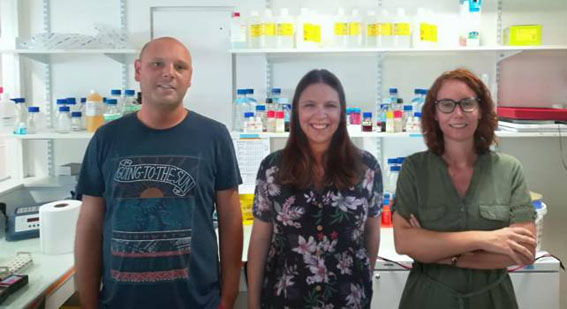
Omar Al Massadi on the left side of the image

Cintia Folgueira in the centre of the image
This work has been carried out in collaboration with national and international centers such as the CNIO, the IDIBAPS, the University of Córdoba, the University of Cambridge, the Helzholtz Zentrum, in Munich, or the Max Planck Institute, in Germany.
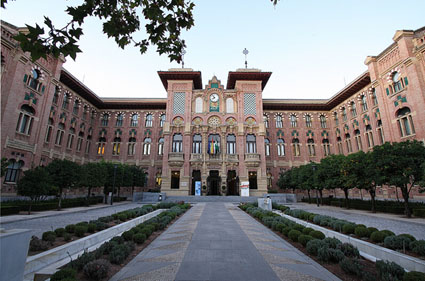
The University of Cordoba
Well, I hope that you will like this article.
Until my next post, kind regards,
Luis.
Sponsored by Costaluz Lawyers.
Please click below:

 0
Like
Published at 11:41 AM Comments (0)
0
Like
Published at 11:41 AM Comments (0)
Spam post or Abuse? Please let us know
|
|